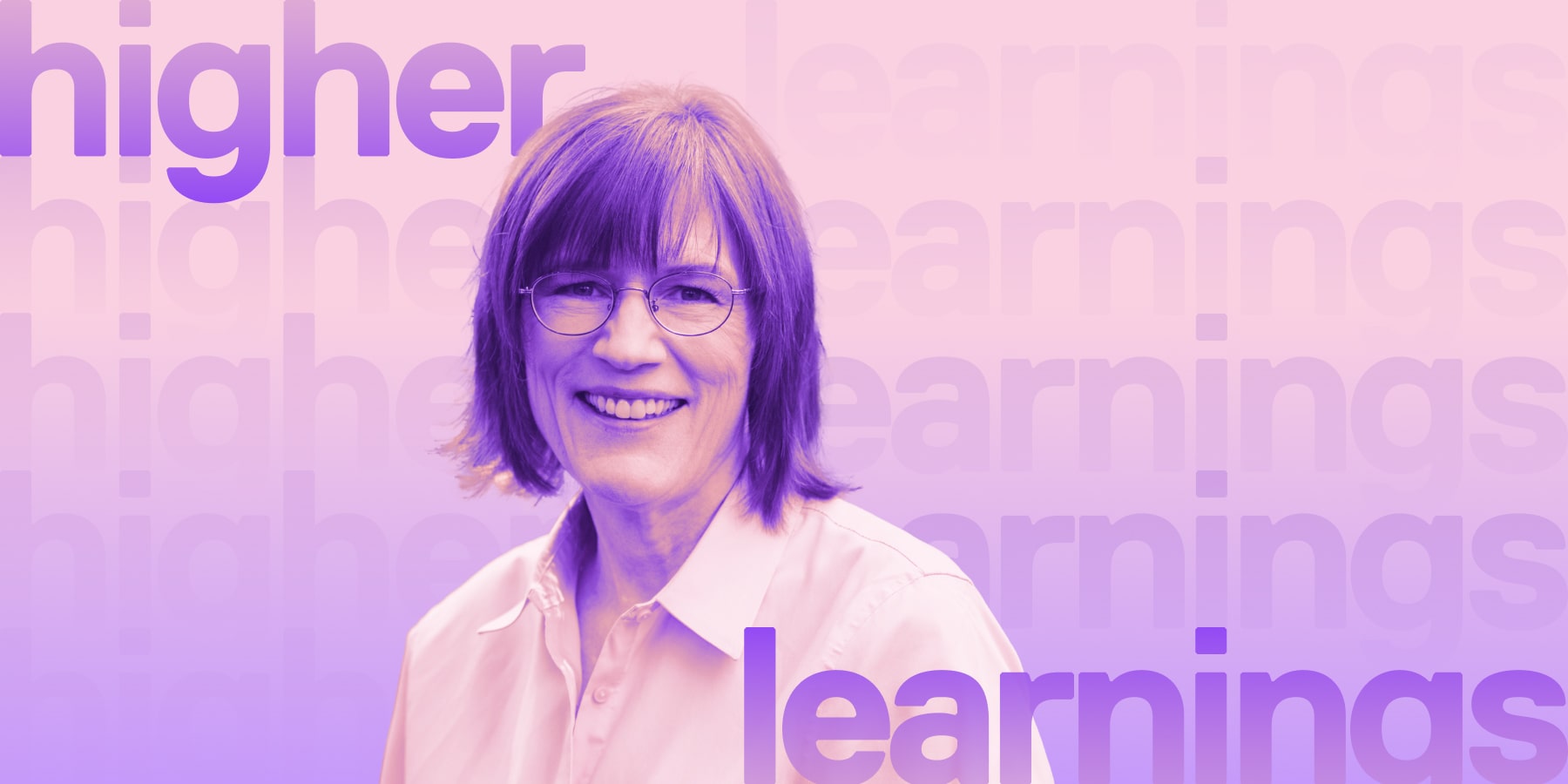There’s no doubt that your lectures are packed with valuable information. But how much of your material will stick with students in the long run? Neuroscience can help us answer this question. Dr. Barbara Oakley, the acclaimed author of Uncommon Sense Teaching, has dedicated decades to exploring the role that brain science plays in capturing and sustaining student interest. She shares her tried-and-true strategies to deepen engagement and long-term memory, with the end goal of gaining ‘neural synchrony’ with students.
→ Watch On-Demand: Engaging Students Using Neuroscience
Why engagement starts with metaphor, motion and your own enthusiasm
At a time where students are increasingly disconnected from their learning experience, capturing their interest is among the most important things you can do as an instructor. But how exactly do you gain—and sustain—attention? As Dr. Oakley shares, ‘hooks’ in the form of powerful and emotional connections made between the material and students’ personal lives are the precursor to engagement. “When you hook students with a story at the beginning of class, that will inactivate their mind-wandering network and activate a state of focus,” she shares. You might embed a viral GIF into your slides. Or perhaps share a thought-provoking podcast clip in advance of a discussion. Ultimately, these small gestures will help reduce the urge to wander to a different task.
From a neuroscience perspective, learning occurs when neurons in the brain are linked. When these neural links are strengthened over a prolonged period, we’re more easily able to retrieve information from our long-term memory. Metaphors can form ‘memorable images’ in our brains and are an especially powerful tool in helping students absorb and retain new material. Dr. Oakley suggests making these metaphorical links to your material as wacky and fun as possible to add levity to the learning process. Go one step further by asking students to develop their own metaphors when describing a specific topic.
When it comes to engagement, don’t underestimate the power of movement. It could be using your own hand gestures. Or getting students out of their seats. The ‘allure of movement,’ as the author puts it, is one of the most effective ways to keep students attentive throughout class. Enthusiasm and engagement have a direct correlation on the student experience as well. “If you exhibit excitement and enthusiasm, you can affect and motivate students in ways that are impossible to do otherwise,” shares Dr. Oakley. Demonstrating enthusiasm shouldn’t be viewed as an emotionally draining chore. She suggests finding a temporary way to be more effusive and outgoing than you might be outside of class in order to help students truly lean into their learning.
Five best practices to make learning ‘stick’
When it comes to building your curriculum, take a page out of Martin Scorsese or Steven Spielberg’s book. No matter your discipline, think of your lecture as a scene in a movie. How will you build up to a significant or emotional turning point? What about introducing something new into your story line? In the context of academia, interspersing active learning exercises throughout lessons makes all the difference in making learning ‘stick.’ “If you use at least 10 percent of class to intersperse active learning throughout lectures, students will perform significantly better,” Dr. Oakley reminds us. Unpredictability and minimal talking on your part can help students become active participants in their learning journey.
How often do you see students re-reading their verbatim notes in advance of a test? Or perhaps highlighting every other line of their assigned reading passage? As Dr. Oakley calls out, educators need to encourage students to go beyond reviewing facts and instead retrieving information from their heads. The best part for any instructor is that retrieval practice is a proven means of making neural connections and deepening knowledge retention in the long run. The author shares her recommended learning strategies to cement learning in any discipline.
- Retrieval practice: Use exercises such as brain dumps or mini quizzes to get students to pull information out of their heads and apply their understanding in a low or no-stakes environment.
- Interleaving: Encourage students to study multiple subjects or topics in one sitting versus reviewing a single topic thoroughly before moving onto the next (otherwise known as blocked practice).
- Jot recall: Ask students to jot down notes, draw sketches or jot down what they remember after reading a passage from their textbook.
- Incomplete notes quiz: Facilitate a low-stakes quiz where students must fill in the blanks for missing information. The process will be especially beneficial for students who have not yet mentally organized the information they’ve learned thus far.
- Collaborative recall technique: Pair students up and ask them to explain to a classmate an aspect of the lesson you just taught. Ensure you reverse roles so that each student has a chance to practice retrieving your material.
As Dr. Oakley underscores, there’s a fine line between building activities around student strengths and making these exercises too challenging. When students are overwhelmed by a task—and when their cognitive load is maxed out—their working memory won’t be able to support complex thinking. However, a little encouragement goes a long way. Dopamine plays an enormous role in acquiring and absorbing new information. When running your next set of classroom activities or after a stress-inducing test, be sure to recognize student efforts. You could use stretch breaks or offer different forms of praise. Promoting a small dopamine burst doesn’t only have to come from you. Encourage students to reward themselves beyond your course using methods like the Pomodoro technique.
In service of neural synchronization
Neuroscience may seem complex at first glance. Dr. Oakley has dedicated decades to demystifying the outsized value that brain science has on the student learning experience. Ultimately, she strives to help faculty and students gain neural synchrony with one another. Not only should students’ brain activity in class mirror yours, but they should also be able to take communicative and interpersonal cues from you when learning. It could be drawing a parabola from your whiteboard into their math notebook. Or mirroring the guitar strings you strum in a music class. No matter your field, gaining neural synchrony with students starts and ends with you.


